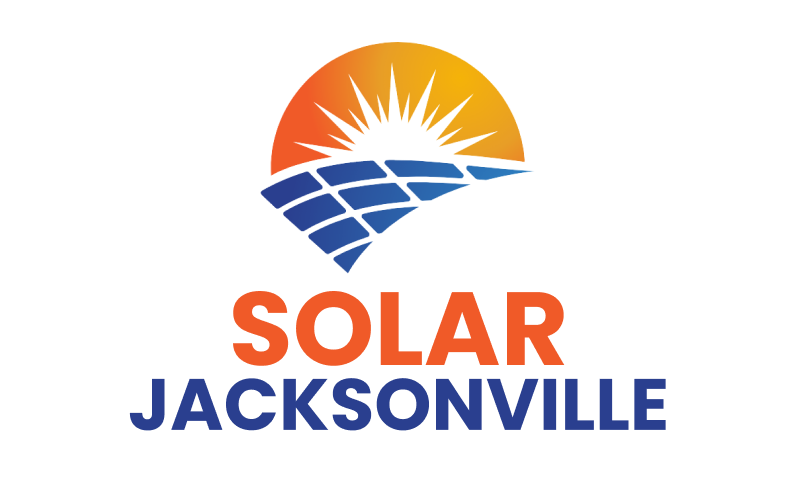Residential Solar
Solar Energy - The Smart Way To Power Your Home
At Solar Jacksonville, we provide top-quality solar products and services to customers in the Jacksonville area. We are committed to providing our customers with the best possible experience, and strive to provide the highest level of customer service possible. We offer a variety of solar products and services, including solar panel installation, solar panel repair, and solar panel maintenance. Contact us today to learn more about our solar products and services, or to schedule a free consultation.
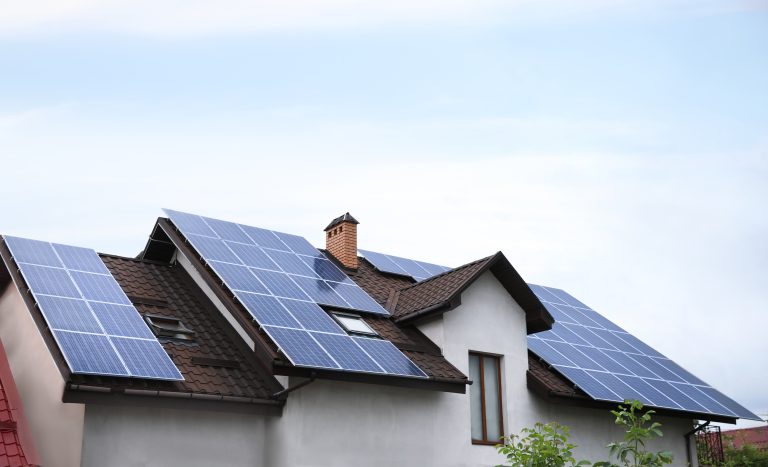

What is Solar Power?
Solar energy is energy from the sun’s light and heat that is converted into thermal or renewable power. Solar energy is the cleanest and most profuse electrical energy source available. You’ll commonly see them on top of houses and other buildings or in photovoltaic stations where they are put in order almost edge to edge to catch sunlight on larger scales.
Solar energy goes way back as early as the 7th century B.C. when humans used the sun to light fires when they discovered that reflecting the sun’s rays onto shiny objects can produce fire. It then progressed during the 3rd century B.C, when the Greeks and Romans used solar power with mirrors to light torches for festivities and ceremonies.
In 1839, French physicist Edmond Becquerel discovered photovoltaic (PV) where the cell produced more electricity when exposed to sunlight, it was called a photovoltaic cell. The PV technology was developed further in 1954 when Daryl Chapin, Calvin Fuller, and Gerald Pearson discovered the first solar cell that is capable of absorbing the transmuting the sun’s energy into renewable power to be used in today’s electrical equipment and tools.
What are the parts of a solar energy system?
Solar panels consist of many complex parts to help them be functional and efficient for everyday use.
Solar Panels
The most visible component of a residential solar electric system is the solar panel because they are installed typically on the roof of the house to convert sunlight to renewable power.
They can also be ground-mounted which is optional but tilted and angled to optimize absorption of sunlight.
Solar Array Mounting Racks
They are non-electrical components that are vital to your solar system. They attach your solar panels and are commonly mounted in one of three ways: on roofs, directly on the ground, or on poles in a free-standing position.
Types of Solar Mounts:
Ground Mounts: This type of mount is usually attached to the solar lineup, on top of concrete docks closer to the ground for stability. They are flexible and can be adjusted manually as seasons change. Ground mounts are a viable option if there’s not enough space on the roof. Although, this is often used in commercial or agricultural settings.
Roof Mounts: Homeowners’ favorite type of mounting that is used to attach a solar lineup to any type of residential home or building. They are becoming popular in boats and RVs too.
Pole Mounts: Pole Mounts connect a solar array on a pole and are secured to the ground by concrete. They are normally raised higher than ground level to capture optimal sunlight throughout the year.
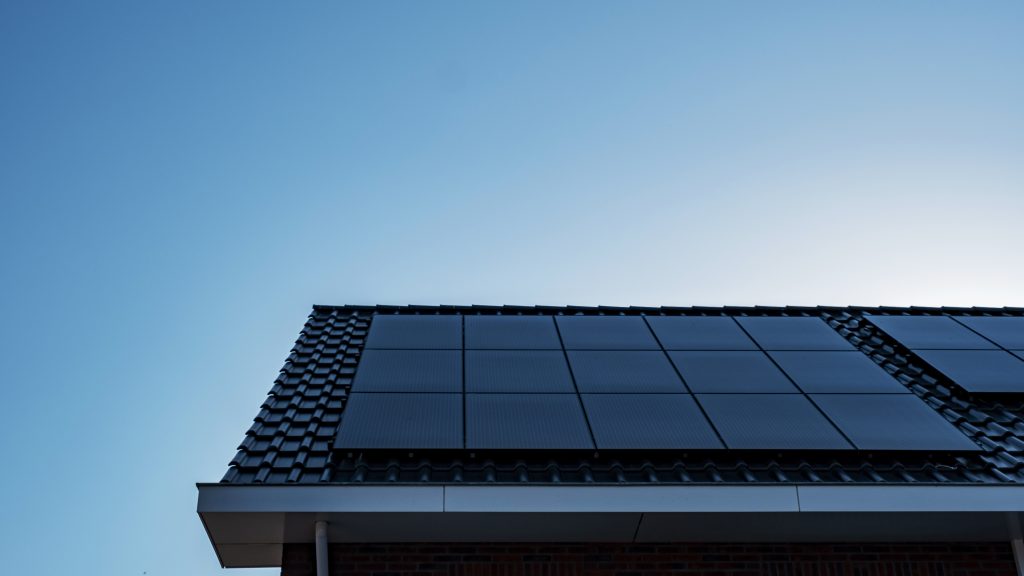
Inverter
The job of the inverter is to convert Direct Current (DC) electricity produced by solar panels into Alternating Current (AC) electricity required by appliances to power on.
Solar Power Meter, Utility Meter, Kilowatt Meter
The solar power meter, also called power system metering, is an optional component that allows you to monitor how much solar power your panels supply to your place. You have the option to adjust the system to achieve optimal efficiency.
Solar Batteries
Solar batteries are another optional element in a solar power system. They store excess power that’s generated during the day and are later used to generate power during nighttime when sunlight is gone. For buildings and houses that need a larger amount of energy, you can use more than one battery known as the battery bank.
Types of Solar Batteries:
- Nickel-cadmium
- Flow
- Lead-acid
- Lithium-ion
Charge Controllers
The charge controllers or charge regulators regulate the voltage, preventing batteries to be overcharged. They manage the flow of electricity from your solar panels to your battery system.
Backup Power
Backup generators are important, especially in areas with poor weather conditions or high household demands, they provide power during times of low system output that can help keep the power running for emergencies.
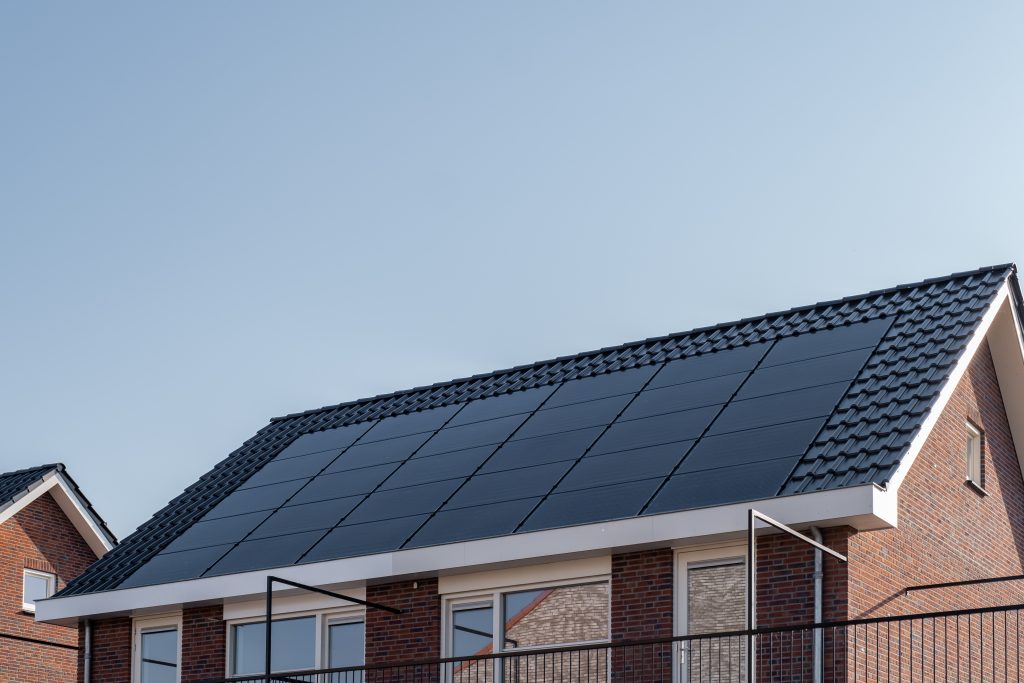
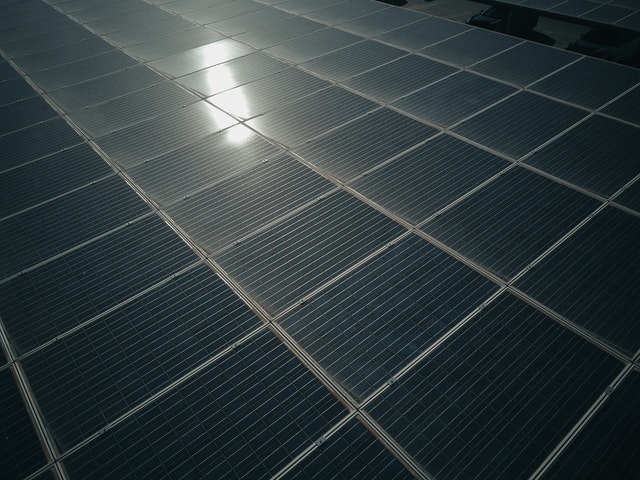
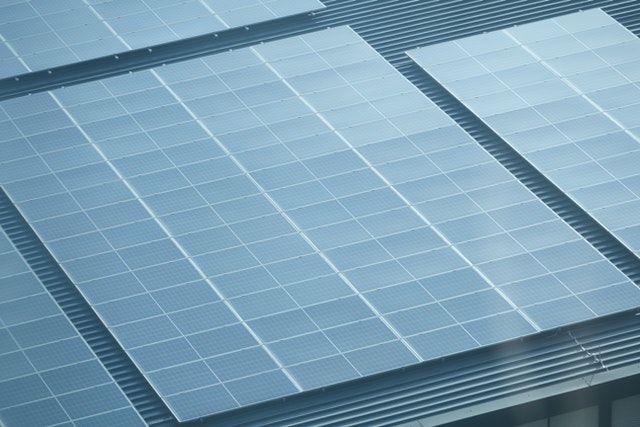
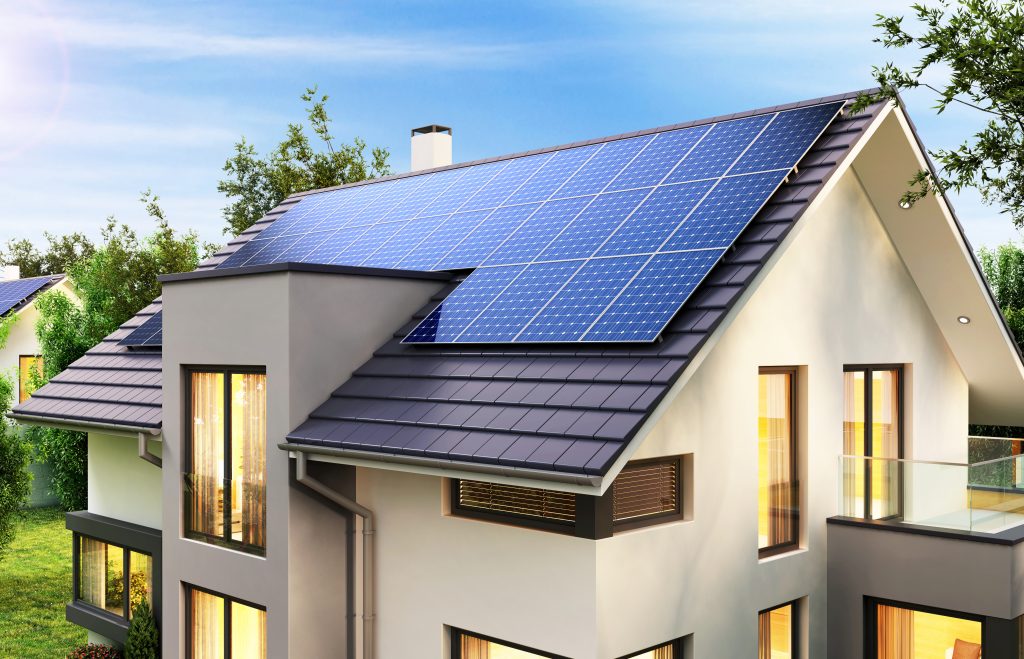
What are solar panels made of?
Solar panels are made of several units or layers of materials. The top part is a glass that protects smaller elements called solar cells. Solar cells have two layers of semiconductor silicon that gather electrons and allow them to move freely through a positive and negative charge. Each solar cell is linked to form the solar panel.
The most critical and commonly used semiconductor material in solar cells is Silicon. They can create energy by safely converting sunlight into usable electricity. Crystalline silicon cells are made of silicon atoms that connect forming a crystal lattice, then the lattice provides an arranged structure that converts light into electricity more efficiently.
There are three types of silicon cells used in creating solar panels:
Monocrystalline Solar Panels: These are made from a single crystal and produced in a silicon wafer design that involves cutting individual wafers of silicon to bind onto a solar panel. They are more efficient than other solar panels but more labor-intensive and expensive. With their unique black appearance, they give the appeal of a modern sleek look.
Polycrystalline silicon: is made of multiple silicon crystals blended. Silicon crystals are melted and then re-fused together into the panel. Although they are not as efficient as Monocrystalline Solar Panels, they are a less expensive option.
Thin-film solar cells: are the most flexible solar panel but the least efficient. They are Amorphous silicon cells that are non-crystalline and are attached to substrates like glass, metal, or plastic.
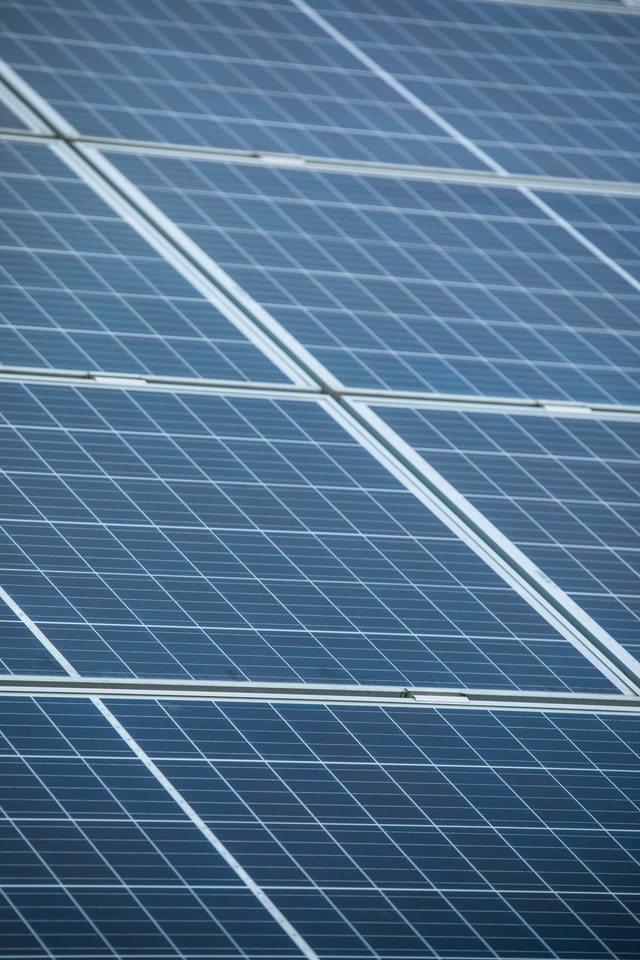

How do solar panels convert the sun's energy?
Inside each solar cell is a thin semiconductor wafer that is made from two layers of silicon which are positively charged and negatively charged, forming an electric field. Once the light energy from the sun hits the photovoltaic solar cell, the cell energizes which causes electrons to loose from atoms within the semiconductor wafer. Once that happens, the loose electrons are set into motion by the electric field that surrounds the wafer and this motion creates an electrical current.
Now that solar panels are effectively and efficiently transforming sunlight into electricity, you will need an inverter to convert Direct Current ( DC ) into Alternating Current (AC) to run through your electrical panel and distribute within the home to power your gadgets and appliances.
How does solar battery storage work?
The solar panel’s limitation is producing electricity only when sunlight is present. In this case, you will need solar battery storage to prolong electricity that can be used even at night.
When your solar panels generate electricity that you do not use, the solar battery will convert the DC electricity into AC power and store it for usage when needed. That means that your home will be independent at times, not relying on the National Grid to produce electricity. This reduces your electricity bills and carbon footprint.
Advantages of PV Solar Panels
Clean and Green Energy source
The main advantage of PV solar panels is that they produce clean and green energy. They do not use fuel other than sunlight, therefore no harmful gasses, water, or air pollution is being released into the environment endangering animals and human health.
Savings
While you will pay upfront for investing in PV Solar panels, you will still end up saving more in electricity costs in the long run because solar power is free and available for a lifetime.
Versatility
PV Solar panels just need sunlight which means they can generate electricity everywhere, making them flexible and useful for travels like camping trips or long car rides.
Low Maintenance
They are silent and visually not intrusive, they are also low maintenance which makes them a favorite option of homeowners compared with other renewable energy systems.

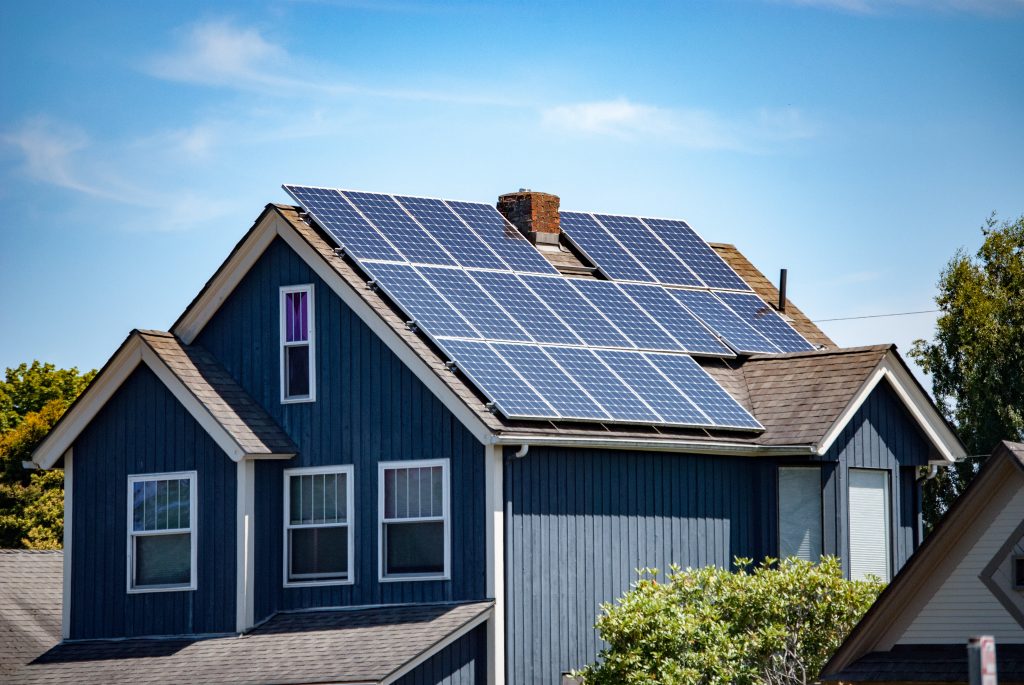
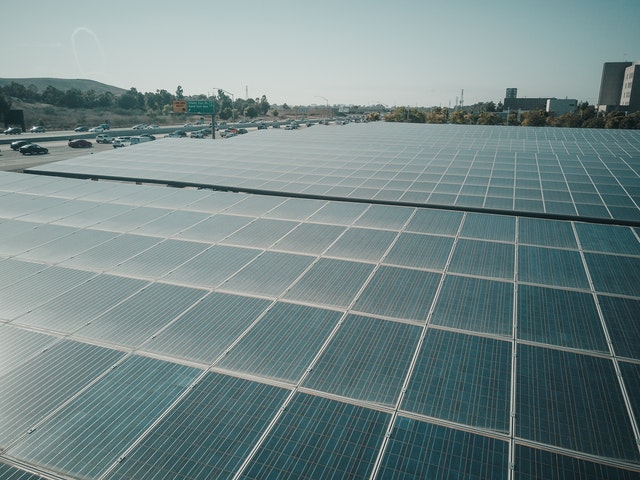

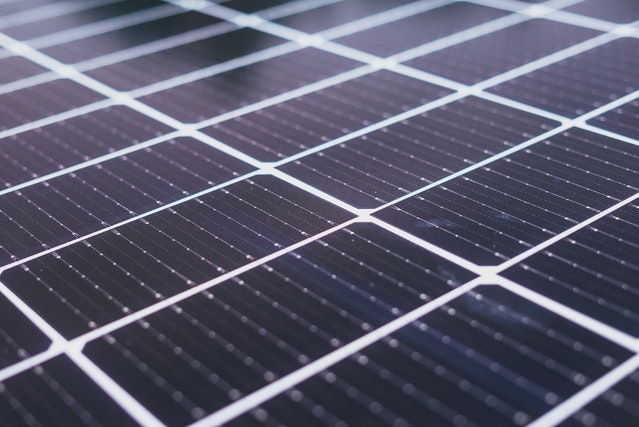
Types of Residential Solar Power Systems
Grid-tied Solar Power System
Grid-tied or grid-connected is the most common type of solar power system used by homeowners. It is a solar power system that connects the home to the traditional electric utility grid and does not include any battery for storage. In cases wherein the solar power system is generating more power than what’s needed, the excess power can be sold back to the utility company under a project known as net-metering. When instances such as the solar power system are not producing sufficient power, the electricity required by the appliances will be drawn from the utility grid.
Some advantages of a Grid-tied Solar Power system include affordability. We all know that purchasing a solar power system can be expensive, but Grid-tied Solar Power systems used less equipment making them a more budget-friendly option. They are low maintenance, reliable and flexible.
Off-grid Solar Power System
The off-grid solar power system is an independent solar power system that is not connected to the main utility grid and has energy storage. This is ideal for remote areas, or poor weather conditions where there are lots of power outages. The excess power can be stored in the battery for future use or in case of an emergency. They are more expensive and larger.
The benefits of having an off-grid solar power system are the independence of using the power you’ve stored in the battery in case you need electricity, without having to rely on your utility company. Even during blackouts, your home will still have full power. Installing an Off-grid solar power system saves you money because you don’t have to pay electricity bills anymore.
Hybrid Solar Power System
The hybrid solar power system is similar to a grid-tied solar system but with an energy storage system that is usually a backup battery. Due to its flexibility, it has grown in popularity in residential and business settings alike. Simply put, when solar energy production exceeds, the surplus solar power is utilized to charge batteries and stored for usage at a later time. When the production is lesser than the demand, the stored energy from the backup batteries will be used to make up for the shortage. A hybrid Solar power system provides the convenience of having backup power during blackouts while reducing electricity bills at the same time.


Best Roof Materials for Solar Panels
Asphalt Shingles
Asphalt shingles are the most common and popular type of roof used for housing, it’s also considered the best roof for solar panels. The shingles are made from cellulose or fiberglass types of mats that are durable and flexible. It is easier to install panels to the roof, it can be drilled and attached the mounts to these studs, the space between the panel and the studs will then be sealed with flashings to prevent rainwater from entering your home.
Clay Tile
Clay tile roofs are famous for their aesthetic appeal which is part of Spanish culture. They are very resilient to outside elements and harsh weather. Typically, it’s not easy to install a solar panel on a roof with clay tile because the expert will have to remove the tiles where the solar needs to be placed, then lay down composite shingles to install the array. To finish it off, they would need to fill in the area around it with clay tile for a more beautiful outcome.
Slate
Slate is ideal for roofing material, it is a natural element that is quarried and then manufactured into tiles with minimal processing making it an eco-friendly option. In addition, slate is durable and has a lifespan of hundreds of years, a great insulator that helps cool air in the summer season and warm air in the winter season. This improves energy efficiency and lowers your electricity bill when paired with solar panels.
Concrete Tiles
Concrete tiles are durable, sustainable, and aesthetically appealing. They are compatible with solar panels because they are energy-efficient, and they can cut the transfer of heat by up to 50%. This includes their inherent reflective properties that permit the reflection of sunlight which releases the heat and transfers it from the roof deck into the structure. Concrete tiles help reduce cost and overall temperature.
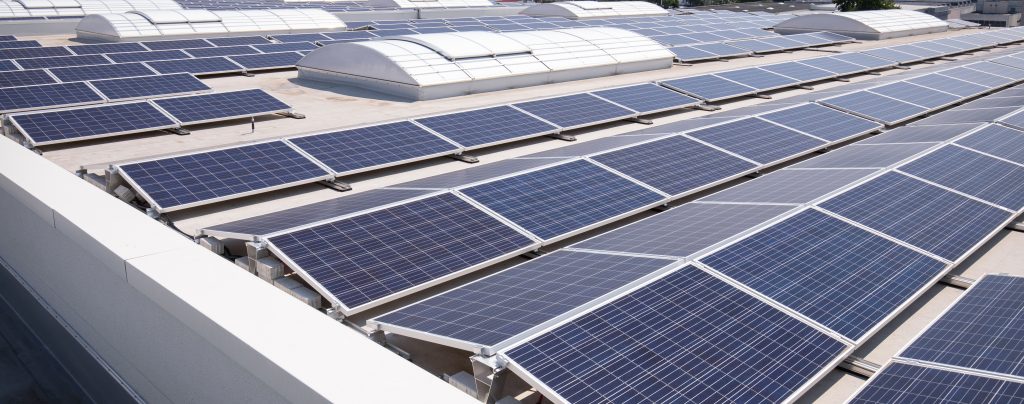

Save Money Now- Get A FREE Quote!
If you want to save cost and think of an eco-friendly option, the best way to do it is to go Solar. First things first, you have to choose a trusted Solar Power Company that provides you with what you need for your home. Luckily, Solar Jacksonville is a team of experts who can help you in shifting to renewable energy sources. We have years of relevant experience in handling solar panel installation professionally, we make sure to provide options and work with you through deciding the best solar power system that’s fit for your lifestyle. It’s time to reduce your electricity bill and save money and the environment. Schedule a no commitment, no-obligation appointment with us. Contact us and Get A FREE Quote!

